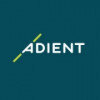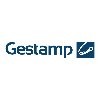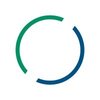Filter interviews by
HYUNDAI TRANSYS INDIA Design Engineer Interview Questions and Answers
HYUNDAI TRANSYS INDIA Design Engineer Interview Experiences
1 interview found
I applied via Campus Placement and was interviewed in Jan 2024. There were 2 interview rounds.
(1 Question)
- Q1. What do you expecting from company
- Ans. A good knowledge and skills from company
(2 Questions)
- Q1. Which subject you like most
- Ans.
I enjoy studying mechanical engineering the most.
I have a passion for understanding how machines work and how they can be improved.
I excel in subjects like thermodynamics, fluid mechanics, and materials science.
I enjoy applying theoretical knowledge to real-world problems through design projects.
I find joy in creating innovative solutions to engineering challenges.
- Q2. Computational fluid dynamics
Top trending discussions






Interview questions from similar companies

I applied via Recruitment Consultant and was interviewed in Feb 2021. There were 3 interview rounds.
Interview Questionnaire
1 Question
- Q1. General questions from my experince Background.

Interview Preparation Tips
Experience: Ist round was writtn round, no neg marking (easy but be accurate),
total questions-90 (divided into 3 section) ,time alloted-90 min.
3 sections r as follows:-
sec A - 30 ques, technical(subjects including EDC,AIC,DLD,basic BEE)
sec B- 15 GK+15 quant(RS agrwal is more than enough )
sec C- 30 ques, bacis C and C++ (very easy)
they will judge u section wise
Tips: Most IMPORTANT part of placement is WRITTEN round, we were around 60-70 students in total and out of which only 7 were selected for further rounds
i suggest u all to prepare very well for this round and try to b very accurate,
solve RS agrawal or arun sharma(level 1 and solved question only) for quantitative aptitude, and for C questions solve from online site INDIABIX , you will find all questions are come from here only
Duration: 90 minutes
Total Questions: 90
Round: Technical Interview
Experience: Next is PI technical and questions asked to me :-
1)Tell me about urself(do include brief intro about your internship if u have done any otherwise no problem)
2)About my internship
suddenly he started asked question from C-
3)what is BIT FIELD?, MACROS? ,PREPROCESSOR? ,EXTERN?
4)Diff btw char array and int array?
then he switched to embedded system-
5)What are INTERRUPT?, EEPROM? , BAUD RATE?
6)About my Projects(i suggest u to all tell project related to embedded only)
7)FAV subject and question from it (do prepare atleast 2 subjects very well)
8)What is electronics, Telecommunication?
9)diff btw ETNT AND ECE?
then he asked some HR questions too:-
10)what is your STRENGTH AND WEAKNESS(support your answer with example)
11)where do u see urslf 5 yr from now?
12) hobby?
13) low pointer?
then he asked me to ask question:
i have asked 2 question:
14)who is your biggest competitor?
15)what is the hierarchy of this job post?
Tips: 1ST TECHNICAL
They will focus on 2 things only :
1)C(most imp) : even it is a core elex company but they will not going to take you if you dont know C,
must learn dis topics viz ARRAY, POINTER, STRUCTURE, 4 storage class,from yashwant kanetkar and solve question from INDIABIX
2) PROJECTS: Projects on EMBEDDED SYSTEMS only, as many projects as u have greater is the chance of your selection and try to explain it in detail as much as u can.
Round: HR Interview
Experience: its just a formality round if they called you for this round that means u r selected ,they just wanted to know if u r really interested for this job? and u willing to join there company or not..
Skill Tips: 2 kind of people can crack interviews in core companies,1 having good POINTERS , projects,good technical knowledgesecond having low pointer but MANY PROJECTS+GOOD TECHNICAL KNOWLEDGE +CONFIDENCENo doubt i lie on second criteria. After 6th sem my CPI was 7.61 only , therefore i already knew that its gonna be tuff for me to be selected in core company but i have done 10+ projects in EMBEDDED SYSTEMS and INTERNSHIP too, so i found it not a big deal for me,always remember CONFIDENCE is the key..best of luck \m/
College Name: NIT RAIPUR

I applied via Naukri.com
Interview Questionnaire
1 Question
- Q1. Related to my current profile, lot of question related to my roles and responsibilities in my previous employer.
Interview Preparation Tips

I applied via Recruitment Consulltant and was interviewed in May 2021. There were 4 interview rounds.

(1 Question)
- Q1. Product knowledge such as DIS, Circuit Integration, Process of Complete Design Cycle.
(1 Question)
- Q1. Same sort of questions with some problems to be solved based on power supply sections, current and voltage calculation etc.
(1 Question)
- Q1. Relocation, Salary Negotiation
Interview Preparation Tips


(5 Questions)
- Q1. Embedded C questions
- Q2. Watchdog Timer, I2C, SPI, UART
- Q3. Design State Machine
- Q4. Mix Sound Driver
- Q5. Renesas related
Interview Preparation Tips

I appeared for an interview in Sep 2024, where I was asked the following questions.
- Q1. Related logistics
- Q2. Production planning
- Q3. Import export related

I applied via Recruitment Consulltant and was interviewed in Jul 2024. There were 3 interview rounds.
(2 Questions)
- Q1. Quality core tools
- Q2. Customer interaction
(2 Questions)
- Q1. Knowledge about Quality tools
- Q2. Root cause analysis
(2 Questions)
- Q1. Salary discussion
- Q2. Company policy & benifits

Senior Engineer Interview Questions & Answers
Toyoda Gosei Mindaposted on 8 Sep 2024
I applied via Recruitment Consulltant and was interviewed in Aug 2024. There were 5 interview rounds.
(2 Questions)
- Q1. Your expertise in which field
- Ans.
My expertise lies in the field of mechanical engineering with a focus on structural analysis and design.
Specialize in structural analysis and design
Proficient in CAD software such as AutoCAD and SolidWorks
Experience with finite element analysis (FEA)
Knowledge of material properties and stress analysis
Worked on projects involving designing and testing mechanical components
- Q2. What is the problem comming in the part at your working company.
- Ans.
The main problem in the part at my working company is frequent breakdowns due to poor quality materials.
Frequent breakdowns due to poor quality materials
Lack of proper maintenance procedures
Inadequate training of maintenance staff
Supplier issues with delivering substandard parts
(7 Questions)
- Q1. What is quality.
- Ans.
Quality is the measure of excellence or superiority of something.
Quality is meeting or exceeding customer expectations.
It involves consistency, reliability, and durability.
Quality can be subjective and may vary depending on the context.
Examples include high-quality products, services, processes, and experiences.
- Q2. Rubber property and it's testing
- Q3. What is your responsibility
- Ans.
As a Sr. Engineer, my responsibility is to lead and manage engineering projects, provide technical expertise, and ensure the successful completion of tasks.
Leading and managing engineering projects from conception to completion
Providing technical expertise and guidance to team members
Ensuring the successful execution of tasks within deadlines and budget constraints
Collaborating with cross-functional teams to achieve pr...
- Q4. How to solve the problem
- Ans.
To solve the problem, first identify the root cause, brainstorm potential solutions, evaluate each solution, implement the best one, and monitor the results.
Identify the root cause of the problem by analyzing data and gathering information.
Brainstorm potential solutions with a team or individually.
Evaluate each solution based on feasibility, cost, and impact.
Implement the best solution and monitor the results to ensure...
- Q5. What is qa and qc
- Q6. Why do you want to change job.
- Ans.
Seeking new challenges and opportunities for growth in a different environment.
Looking for new challenges and opportunities for professional growth
Interested in working with new technologies or industries
Seeking a better work-life balance or company culture
Wanting to relocate to a different city or country for personal reasons
- Q7. What is your aspects from this company
- Ans.
I am impressed by the company's commitment to innovation, strong team culture, and focus on employee development.
Innovative projects and technologies being developed
Positive team culture and collaboration
Opportunities for professional growth and development
Company's reputation and success in the industry
(2 Questions)
- Q1. What is your current salary
- Ans.
I am currently earning a competitive salary based on my experience and qualifications.
My current salary is in line with industry standards
I am open to discussing compensation based on the responsibilities of the Sr. Engineer role
I believe my salary should reflect my skills and contributions to the company
- Q2. What is the aspect
- Ans.
The aspect refers to a particular part or feature of something.
Aspect is a specific element or characteristic of a subject or situation.
It can also refer to a particular way in which something can be viewed or interpreted.
For example, in engineering, the aspect of a design could refer to its functionality, aesthetics, or cost-effectiveness.
(2 Questions)
- Q1. Joining date and relieving letter
- Q2. Dd documents verification
(2 Questions)
- Q1. Resignation from working company
- Q2. Provided offer letter of the minda tg

I applied via Recruitment Consulltant and was interviewed in Mar 2024. There were 3 interview rounds.
(3 Questions)
- Q1. Bootloader related UDS services
- Q2. HSM and flash driver
- Q3. Startup code sequence
- Ans.
Startup code sequence refers to the order in which code is executed when a program is launched.
Startup code sequence typically involves initializing variables, setting up memory, and executing any necessary setup functions.
Examples of startup code sequence include setting up hardware registers in embedded systems, initializing global variables in C programs, and loading configuration files in web applications.
(3 Questions)
- Q1. Are you ready to work on weekends
- Ans.
Yes, I am willing to work on weekends if necessary to meet project deadlines or address urgent issues.
I understand that sometimes working on weekends may be required in order to meet project deadlines or address urgent issues.
I am committed to delivering high-quality work and am willing to put in extra hours when needed.
I am flexible with my schedule and can adjust my plans to accommodate weekend work if necessary.
- Q2. How will you manage conflicts within the team
- Ans.
I will address conflicts by promoting open communication, active listening, and facilitating constructive discussions.
Encourage open communication among team members to address conflicts early on
Practice active listening to understand all perspectives involved
Facilitate constructive discussions to find mutually beneficial solutions
Establish clear team norms and guidelines for conflict resolution
Seek input from team mem...
- Q3. Why are you switching jobs
- Ans.
Seeking new challenges and opportunities for growth in a more innovative and dynamic environment.
Looking for new challenges and opportunities for growth
Interested in working in a more innovative and dynamic environment
Seeking career advancement and professional development
(2 Questions)
- Q1. Salary negotiation and Notice period
- Q2. Why are you switching
- Ans.
Seeking new challenges and opportunities for growth in a different environment.
Looking for new challenges and opportunities for growth
Interested in working with different technologies or industries
Seeking a better work-life balance or company culture
Wanting to expand skill set or take on more responsibilities
Relocation to a new area
HYUNDAI TRANSYS INDIA Interview FAQs
Tell us how to improve this page.
HYUNDAI TRANSYS INDIA Interviews By Designations
- HYUNDAI TRANSYS INDIA Field Engineer Interview Questions
- HYUNDAI TRANSYS INDIA Graduate Engineer Interview Questions
- HYUNDAI TRANSYS INDIA Planning Engineer Interview Questions
- HYUNDAI TRANSYS INDIA Quality Analyst Interview Questions
- HYUNDAI TRANSYS INDIA Research Engineer Interview Questions
- HYUNDAI TRANSYS INDIA Senior Manager-HR Interview Questions
- HYUNDAI TRANSYS INDIA Design Engineer Interview Questions
- HYUNDAI TRANSYS INDIA Senior Executive Interview Questions
- Show more
Interview Questions for Popular Designations
- Mechanical Engg. Design Interview Questions
- Senior Design Engineer Interview Questions
- Electrical Design Engineer Interview Questions
- Structural Design Engineer Interview Questions
- Piping Designer Interview Questions
- Auto CAD Designer Interview Questions
- Junior Design Engineer Interview Questions
- Hardware Design Engineer Interview Questions
- Show more
HYUNDAI TRANSYS INDIA Design Engineer Interview Process
based on 1 interview
Interview experience
Design Engineer Interview Questions from Similar Companies
Fast track your campus placements
|
Assistant Manager
40
salaries
| ₹4.5 L/yr - ₹11.9 L/yr |
|
Research Engineer
37
salaries
| ₹4.5 L/yr - ₹8.5 L/yr |
|
Executive
28
salaries
| ₹3 L/yr - ₹5.7 L/yr |
|
Production Line Leader
26
salaries
| ₹2 L/yr - ₹3.8 L/yr |
|
Senior Executive
25
salaries
| ₹4.1 L/yr - ₹7 L/yr |

Knorr-Bremse

Fiem Industries

Marelli

Goodyear
- Home >
- Interviews >
- HYUNDAI TRANSYS INDIA Interview Questions >
- HYUNDAI TRANSYS INDIA Design Engineer Interview Questions












